FLYSCH
From prehistory to medieval imaginary kingdoms.
Find out with Begi-Bistan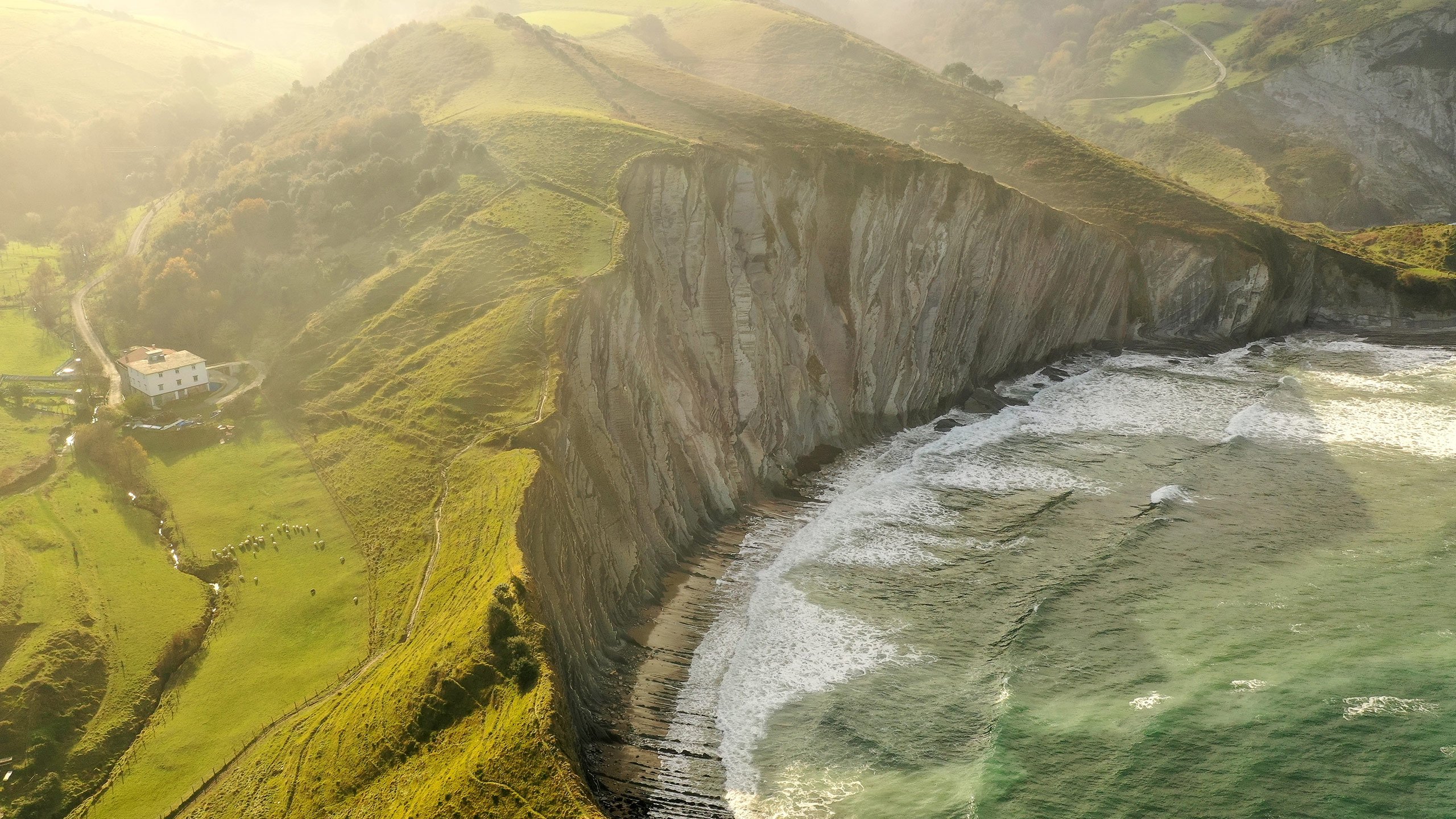
What is Flysch and why is it so special?
Flysch means “flowing” in German, a term first applied to this type of natural formation by the Swiss geologist Bernhard Studer in 1827. Studer referred with this name to the sedimentary rock layer formations he encountered in the Alps.
Flysch.
[n.m.] German, a slippery slope… Also the location where Dragonstone was filmed in Game of Thrones.
In our Flysch, layers of hard rocks alternate with layers of soft materials.
What has happened over millions of years?
Flysch are successions or layers of hard and soft materials that were formed millions of years ago under water and that we can now see on the surface. The constant fight of the sea with its rising and falling tides and storms has worn away and eroded the coastline, sculpting it like a “mille-feuille” cake.
The flysch of the Basque Coast Geopark extend along 13 km of coastline and about 5 km offshore, although only 200-300 m of them are visible to walkers towards the sea.
A serene, deep green coastline, beaches of eroded rocks, multicoloured mille-feuilles washed by the waves of the Bay of Biscay… Feel the thrill of crossing a line and appearing in the time of the dinosaurs on our planet.
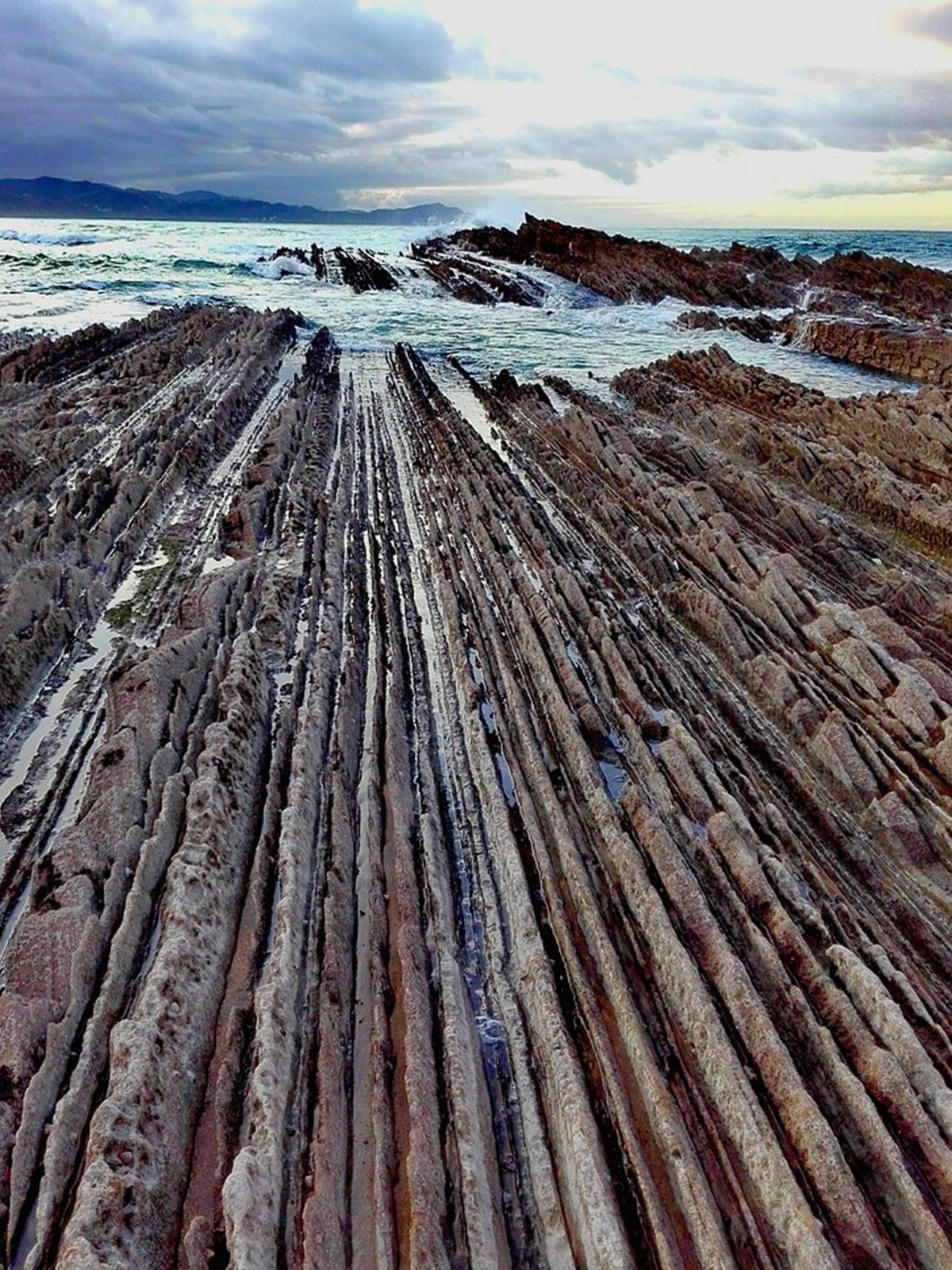
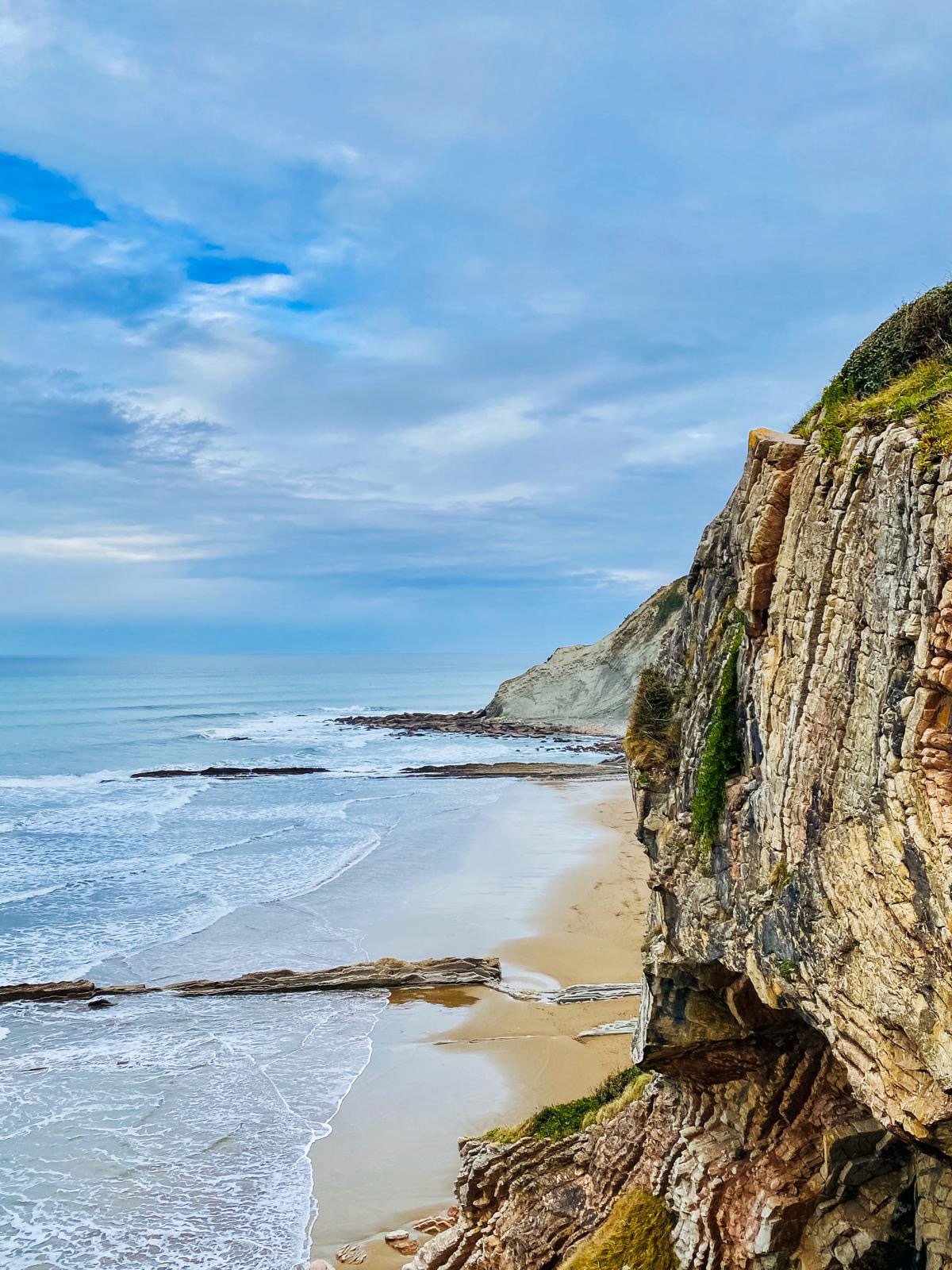
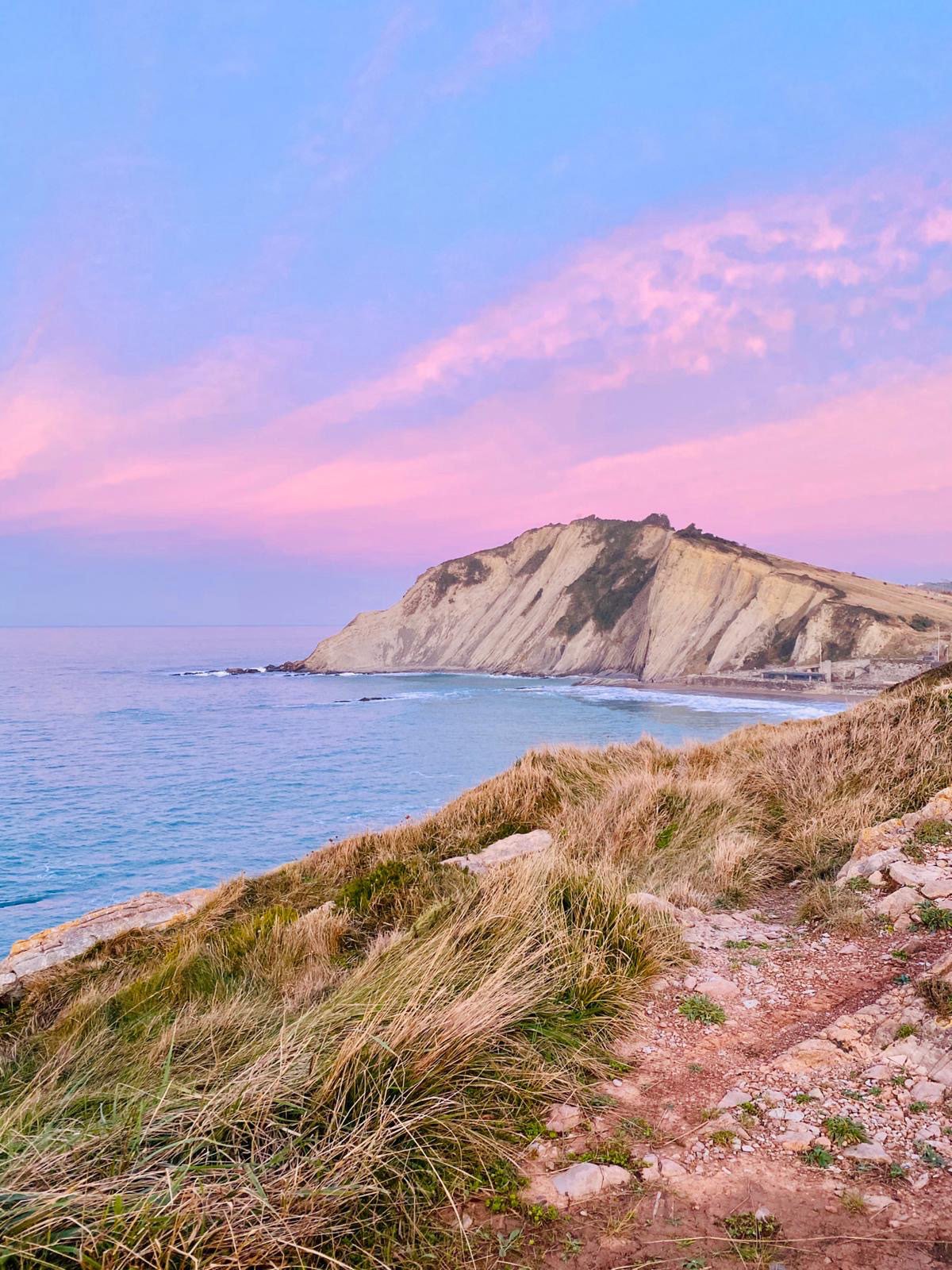
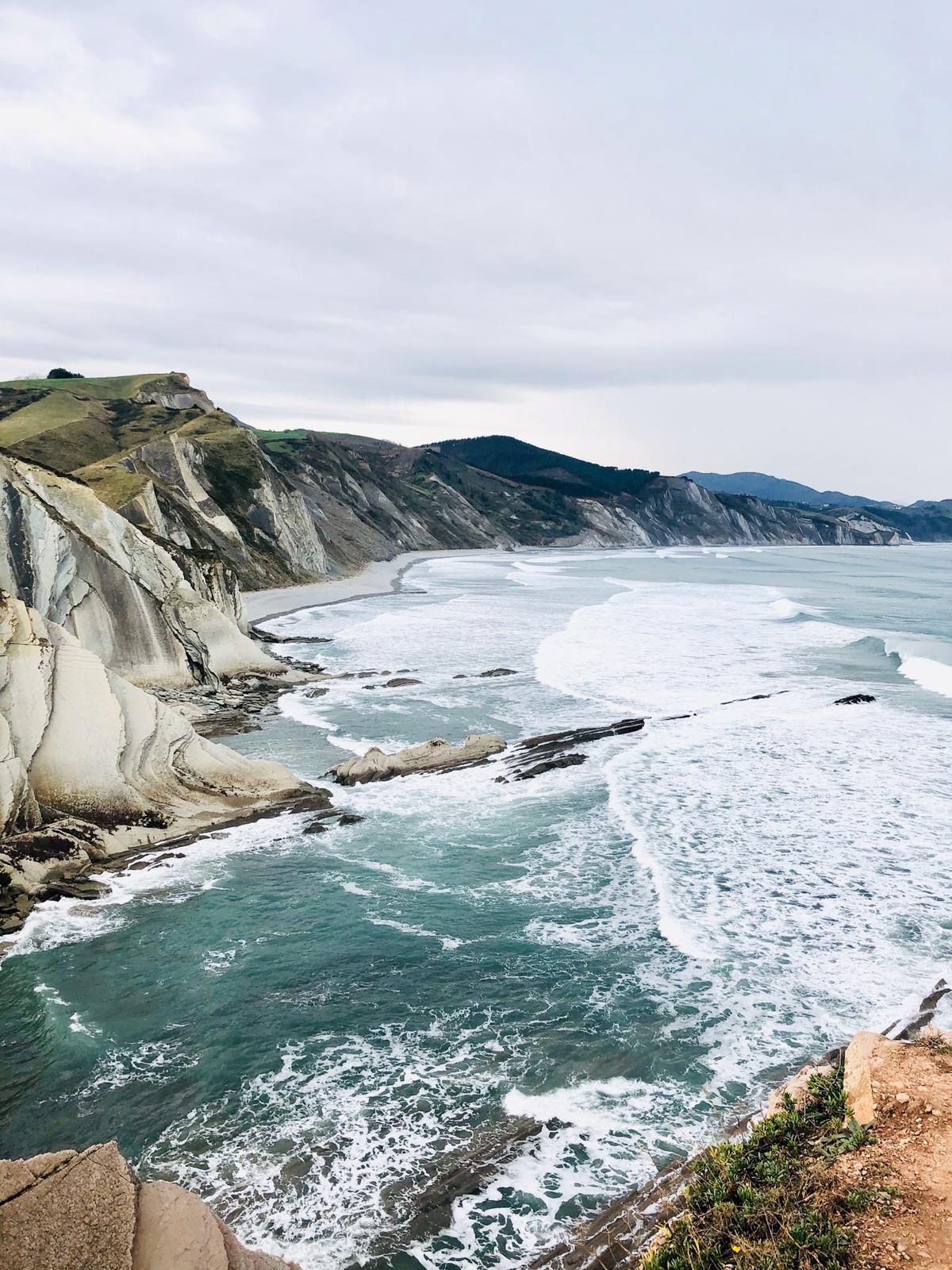
What is the scientific value of the Zumaia Flysch?
The extraordinary rock formations and cliffs of the Basque Coast Geopark, also known as Flysch, have aroused the curiosity of the scientific community for generations.
Why? What is so special about the Flysch of the Basque Coast?
We take you back almost 60 million years almost uninterruptedly from Mutriku to Zumaia.
We would have to go back in time some 110 million years ago and imagine the Iberian Peninsula separated from Europe, with very deep areas where sediments were accumulating, and other shallower areas where reefs were forming.
What about this clash of major forces?
With the rotation of the Iberian plate, the Gulf of Biscay began to open up and the movement of plates and subsequent collision with the Eurasian plate gave rise to the beginning of the creation of our landscapes. Those submerged lands came to the surface and revealed the successive layers that formed the seabed, the Flysch, but at the same time the rudist reefs also emerged, giving rise to the majority of the Basque mountains, the Karst.
On the coastline, the passage of time and erosion has worn away the soft layers more easily than the hard ones, leaving them protruding, unsupported and more exposed: a real open book for the scientific community.
The Flysch rocks tell fascinating stories of more than 60 million years of our planet: stories about micro- and macrofossils, about biological crises and environmental changes, about geochemical signals, about the duration of each period.
Such is its scientific value that the coastal area of the Flysch, between Mutriku, Deba and Zumaia, together with its inland Karst areas, was declared a UNESCO World Geopark in 2010..
Dear friend, you are in front of one of the great natural jewels of the Basque coast. Are you going to miss it?
Series and film set
Few of us in Gipuzkoa were surprised when we heard rumours that Time Warner had chosen the Flysch as a new domain in the universe created by RR Martin.
The amazing rock formations, the antediluvian landscapes, the apparent isolation and serenity of the coast… it was the perfect home for the mother dragon! And suddenly, in autumn 2016, Jon Snow, Tyrion Lannister, Daenerys Targaryen, Lord Davos and the rest of the cast of Game of Thrones began to arrive at the Flysch among us, in the Basque Country.
Itzurun beach in Zumaia also gave life to another of the paradises of the great series where Jon Snow disembarks on his visit to the great Queen of the South.
However, it was not the first and will not be the last time that Itzurun has made local and international producers fall in love: “8 apellidos vascos”, “Zipi y Zape 2”, “Aquí arriba, allí abajo”, “Haundiya”, “La línea invisible” or “Lasa y Zabala” were all filmed on the Flysch coast, adding to the infinity of stories that are and will be told in one of the most spectacular areas of our coast. Come and be part of this mysterious kingdom!
What is the best way to discover the Fysch?
By sea or by land, as a couple, as a family or as a group.
But always, with Begi Bistan01.
Flysch for individuals and groups
Experience the magic of the Zumaia Flysch in small groups. Fascinating details, unique routes, geological information, from the hand of our wonderful specialised guides!
02.
Flysch for agencies
Trust a team of local people who love their coast and know it inside out to translate the magic of the Flysch to your clients – they will leave delighted with us!
03.
Flysch for companies
Outdoor team building is more effective team building. And if the scenery is as spectacular as the Flysch, the results are even more remarkable!
04.
Flysch for schoolchildren
Are you looking for a place with educational value that is also fascinating for your school trips?
05.
Flysch for people with functional diversity
Do you love the great outdoors? Our Flysch trails are inclusive and accessible.